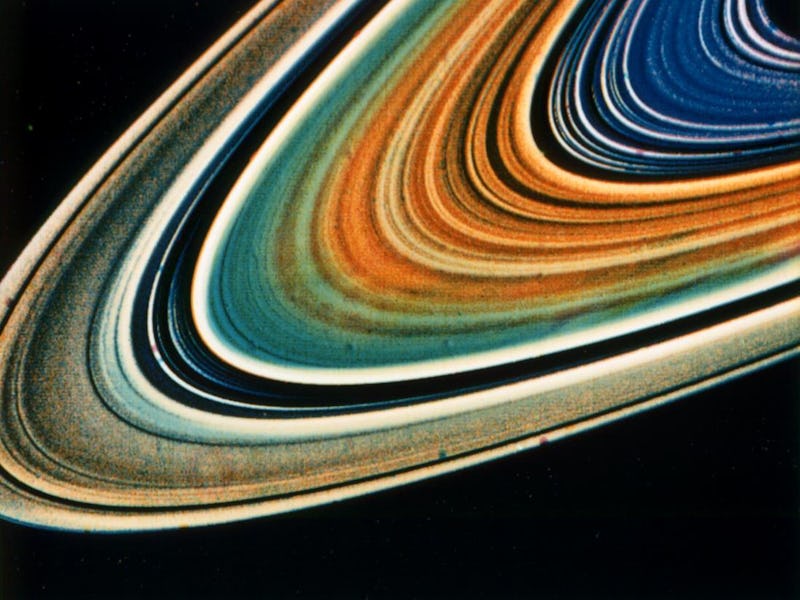The Birth of Saturn's Beautiful Rings Was Savagely Violent
Putting a ring on it has never been more destructive.

In the 400 years since Galileo discovered Saturn’s rings, astronomers have obsessed to learn exactly how these incredible celestial structures — comprised of ice and rock, stretching out as big as a house or shrunken to as small as a speck of sand — first originated. We now have an answer, and it’s more savage and ferocious than we could have realized.
In a new study published in the journal Icarus, researchers from Japan’s Kobe University report using sophisticated modeling and computer simulations to unravel how the rings were born. They started off with the knowledge that four billion years ago, during a period called the Late Heavy Bombardment, there were several thousand Pluto-sized objects that existed beyond Neptune. So the researchers calculated the probability that these objects passed by the planets of our solar system during this period, only to be destroyed by the planet’s tidal force.
They figured that these celestial objects did experience multiple encounters with three of our ringed planets — Uranus, Neptune, and Saturn. The researchers plugged all of this information into a computer simulation to figure out how much disruption actually happened and found that, “the combined mass of these captured fragments was found to be sufficient to explain the mass of the current rings around Saturn and Uranus.”
Celestial objects got pummeled when they got too close to Saturn. Those fragments were captured in the tidal force of the planet and coalesced to form rings. It’s similar to the proposed process for how Mars will develop its own ring in about 30 million years through the torn apart pieces of its crumbling moon, Phobos.
This Saturn ring revelation comes paired with an extra surprise: a new image of the rings captured by NASA’s Cassini spacecraft.
This photo was taken with a spectral filter.
Here we see the famed rings lit by the sun at 41 degrees above the ring plane. Consisting of continually colliding icy particles, NASA points out that these collisions are what cause the rings to wave and wake. This in turn creates a “subtle influence” on both Saturn and its moves. It’s a chain reaction of influence and reaction — much like the creation of the rings themselves. The life of the rings — gorgeous as they are — continue to exhibit residual traits of their more chaotic past.